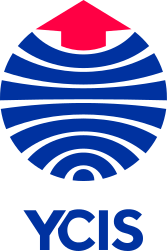Go Back
News
School News
How ECE Children Explore Their Creative Sides Through Play
School News
18 Oct, 2019
10 : 00
It is not only through formal music or art classes that children are exposed to creative pursuits. In fact, children innately begin to explore their creative sides from a very young age. For students at Yew Chung International School of Shanghai (YCIS Shanghai), from their first interactions with the school’s curriculum in kindergarten to their time spent in Upper Secondary studying in the International Baccalaureate Diploma Programme (IBDP), they are always offered an abundance of creative opportunities. YCIS Shanghai, Puxi Early Childhood Education (ECE) teachers Ms Anna King, Ms Nora Jiang, and Ms Marcella Dawson sat down to explain how even the youngest learners find creativity all around them.
Boundless Creativity
Creativity comes in all forms, and the ‘Learning Through Play’ model in the YCIS ECE programme means that students start to explore their creative sides at school as soon as they arrive in Kindergarten at the age of two (K2). The ‘Learning Commons’ at the YCIS Puxi ECE campus were specially designed to provide open environments with plenty of resources to give children opportunities to take their creativity into their own hands. The Learning Commons comprise of ‘role play’, ‘creativity/art’, ‘construction’, and ‘sensory’ areas. Exploratory play takes children on creative journeys throughout these sections, which might also incorporate elements of art, science, mathematics, and languages. For example, children might draw pictures based on a story they heard on a previous day; mix paints to make new colours; or watch the paint drip and run down a page, thus exploring the effects of gravity. Teachers give the children the space and creative freedom needed to be autonomous in their exploration, resulting in youngsters who are able to generate their own meanings in their work, and who can happily elucidate the intention behind their creations.
In addition to these daily opportunities to explore their creativity in open settings, there are weekly Music classes in K3, and there are Art and Music classes each week with specialist subject teachers for students in K4. These classes provide structured learning of creative pursuits and often open up years of creative pleasure for students – some of whom even go on to study arts subjects at university because of such courses.
Developing Skills through Play
Whether it’s taking part in a role-play scenario, participating in recycling activities, seeing the changing states of materials when adding water, or playing with playdough, children are able to develop and enhance a range of skills, abilities, and attributes while learning through play. This can include developing their sense of confidence, improving their communication and social skills, creating a deeper sense of imagination, and inspiring curiosity needed to explore new ideas. There is always a chance for children to seize a learning opportunity, and even waiting for glue to dry can help develop a child’s patience or be an opportunity for reflection on the work they have just produced. This type of thoughtfulness is key to nurturing creative minds.
Taking Creativity Home
For parents, it can be very helpful to talk with their child’s teacher to learn about the types of creative activities the teacher has observed the child enjoying in school, so that they may further explore and nurture this creativity at home. For example, if a child has developed an interest in drawing animals, he or she can be taken to a local zoo, or they can view pictures of animals in books or online. Some of the best creative moments can come from simply letting children explore, make mistakes, and extend their learning and passions they have discovered in school.
Extending the Conversation
Talking with children to truly under their interests can be very rewarding for both the child and the parents. This understanding can be achieved through deeper discussions about what a child might be working on or playing with, and by asking children to express themselves, and their intentions. When young children lead the conversation, they often produce creative ideas and responses to questions, and ensuring that they have a voice and understanding and respecting their opinion has powerful benefits. Not only might this result in additional creative output, but it can also help develop thoughtful, imaginative young people.
Creativity knows no bounds, and for parents, just as at school, there are many ways to provide an open environment for young learners to try, discover, and, ultimately, thrive as creative individuals.













